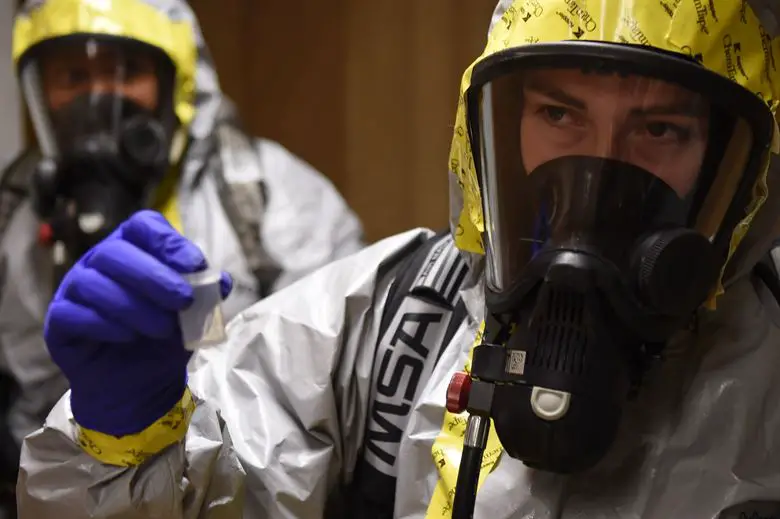What are OSHA’s hazmat suit requirements? We explain OSHA’s different requirement levels and what they are used for in this article.
OSHA Hazmat Suit Requirements
The Occupational Safety and Health Administration (OSHA) issues rules and regulations for workers involved with Hazardous Materials or HAZMAT. Hazmat suits must comply with these OSHA requirements by law.
OSHA’s safety requirements cover four hazmat suit protection levels A, B, C and D. The maximum protection level against hazardous materials is Level A, with protection requirements going down until you reach Level D. The level of protection is assigned according to the substances and hazards that the wearer is expected to come across.
These four OSHA-required levels are designed to ensure hazmat suits adequately protect workers from chemical, physical or biological hazards.

The employer’s Health And Safety Plan (HASP) is required to list the proper level of hazmat suit protection for the environment.
If you are looking to purchase a hazmat suit also check out our in-depth Essential Hazmat Suit Buying Guide.
OSHA Hazmat Suit Requirements for Level A
The OSHA requirements for Level A suits include:
- A full, encapsulated protective vapor suit pressurized from the inside
- Full Self-Contained Breathing Apparatus (SCBA)
- Fhemical-resistant safety boots with steel toes
- Inner chemical resistant gloves, and
- 2-way communication via radios
This level provides the highest level of protection of the eyes, skin and respiratory system from hazardous gas, liquid or solid substances.
Level A Hazmat suits are used when there are substances known to cause cancer or toxicity leading to death. This includes nuclear radiation and carbon monoxide in an enclosed environment.
OSHA Hazmat Suit Requirements for Level B
The OSHA requirements for Level B are similar to Level A. Level B hazmat suits provide the same protection for the respiratory system but less protection for the outer body and skin. The outer chemical suit provides splash protection from liquids but does not provide vapor protection.
Level B hazmat suits are required by OSHA for hazardous materials that don’t require the highest level of protection for the skin. Situations requiring Level B suits include post-fire inspections and medical treatment of airborne viruses.
OSHA Hazmat Suit Requirements for Level C
Level C is the most common level of protection used for hazmat suits. These suits are worn when harmful substances are below the OSHA Permissible Exposure Limits (PELs).
The requirement for OSHA Level C include:
- A hard hat
- 2-way communication system
- Safety boots
- Chemical-resistant gloves
- Air-purifying canister-equipped respirator
- Full face piece
Protection Level C has the same level of protection for the skin as Level B but a reduced respiratory protection level.
For chemical emergency responses, OSHA does not allow Level C hazmat suits.
OSHA Hazmat Suit Requirements for Level D
Typically, hazmat suits rated Level D are what you would see at a construction site, manufacturing facility, or medical facility where fairly benign substances are found.
The requirements for OSHA Level D include:
- Chemical splash goggles
- Safety glasses
- Safety boots or shoes
- Coveralls
There is no requirement for chemical protection or respiratory protection at this level. OSHA Level D hazmat suits are used when there is no known hazard in the atmosphere.
This summary of OSHA hazmat suit requirements should be used as a general guide to purchasing and/or deploying protective gear for yourself or your workers.
UP NEXT: What Is a CDC HAZMAT Suit?

